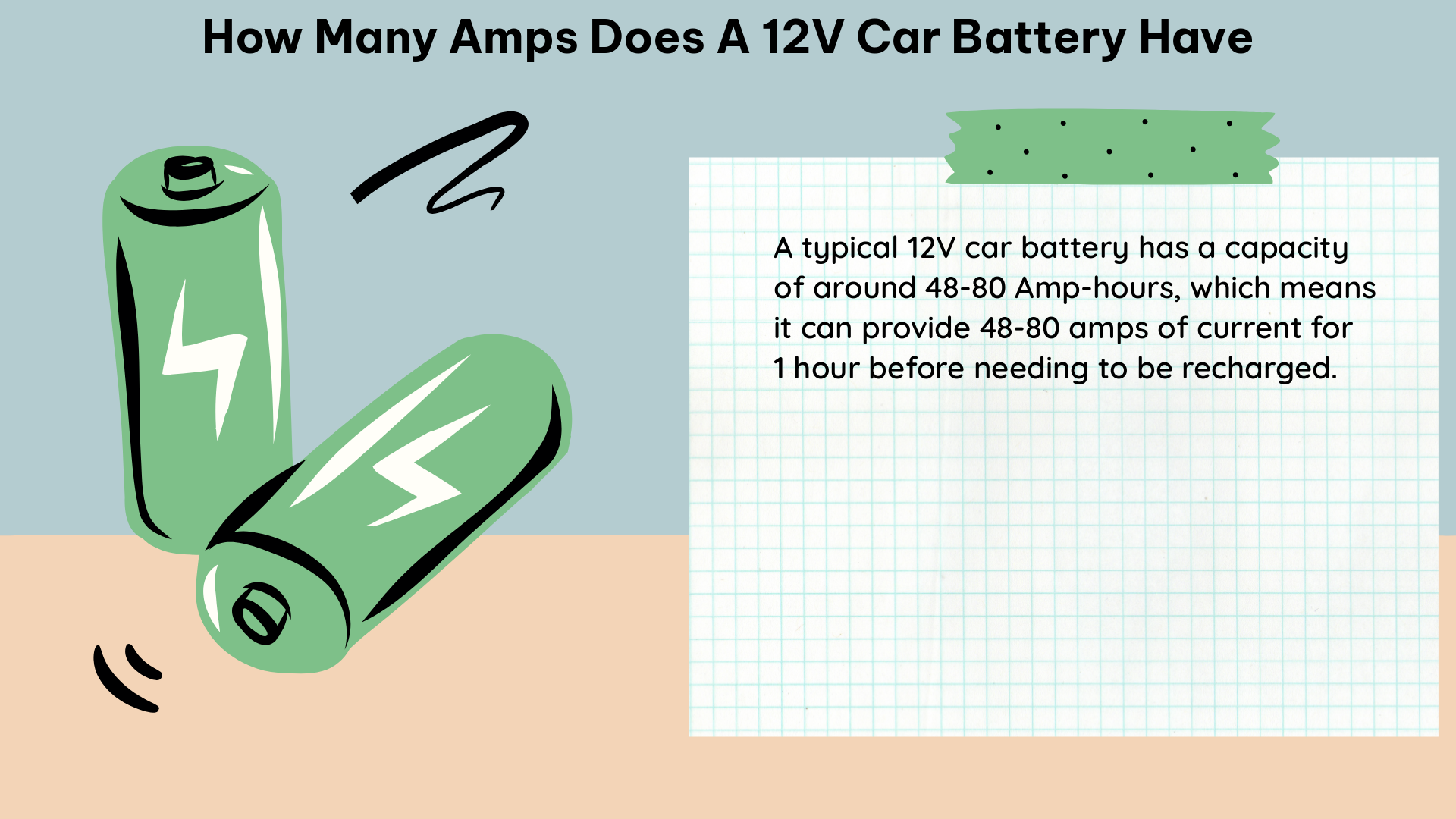A 12V car battery is a crucial component of a vehicle’s electrical system, responsible for powering various electronic components and starting the engine. The amount of amps a 12V car battery can deliver is a crucial specification that determines its performance and suitability for a particular vehicle. In this comprehensive guide, we’ll delve into the technical details of how many amps a 12V car battery can provide, as well as the factors that can influence its amperage.
Understanding Cold Cranking Amps (CCA)
The most common way to measure the amperage of a 12V car battery is through the Cold Cranking Amps (CCA) rating. The CCA rating represents the number of amps a battery can deliver for 30 seconds while maintaining a voltage of at least 7.2V at 0°F (-18°C). This measurement is crucial for determining a battery’s ability to start an engine in cold weather conditions.
For most passenger vehicles, the CCA rating typically ranges from 400 to 600 amps. However, larger vehicles, such as trucks and SUVs, may require batteries with higher CCA ratings, often ranging from 600 to 800 amps or even higher. The specific CCA rating required for a vehicle can vary depending on the engine size, electrical load, and other factors.
Calculating Ampere-Hours (Ah)

Another way to measure the amps in a 12V car battery is by determining its Ampere-Hour (Ah) rating. The Ah rating represents the amount of current a battery can deliver over a specific period of time, typically measured in hours. To calculate the Ah rating, you can use the following formula:
Ah = Voltage × Capacity / 1000
Where:
– Voltage = 12V
– Capacity = The battery’s rated capacity in milliamp-hours (mAh)
For example, if a 12V car battery has a rated capacity of 60,000 mAh, the Ah rating would be:
Ah = 12V × 60,000 mAh / 1000 = 720 Ah
The Ah rating is essential in determining how long a battery can power a device or system under a constant load, as well as its performance in lower temperatures.
Factors Affecting Battery Amperage
The amps in a 12V car battery can be influenced by various factors, including:
-
Battery Age: As a battery ages, its internal resistance increases, which can reduce its ability to deliver its rated amperage, especially in cold weather.
-
Maintenance Practices: Proper maintenance, such as regular cleaning, tightening of connections, and avoiding overcharging, can help maintain the battery’s amperage capacity.
-
Environmental Conditions: Extreme temperatures, both hot and cold, can impact a battery’s performance and overall amperage rating. Cold temperatures can increase internal resistance, reducing the battery’s ability to deliver its rated capacity.
-
Battery Type: Different battery technologies, such as lead-acid, AGM (Absorbed Glass Mat), and lithium-ion, may have varying amperage capabilities and performance characteristics.
Measuring Battery Amperage
To accurately measure the amperage of a 12V car battery, you can use a battery tester or multimeter. These tools can provide valuable information about the battery’s overall health, including its CCA rating, Ah rating, and voltage.
When using a battery tester, it’s essential to follow the manufacturer’s instructions and ensure that the tester is compatible with the specific battery type. Additionally, it’s recommended to perform the test under the same environmental conditions as the battery’s intended use, as temperature can significantly impact the readings.
Conclusion
In summary, the amps in a 12V car battery can be measured using the Cold Cranking Amps (CCA) rating or the Ampere-Hour (Ah) rating. The CCA rating is the most common way to assess a battery’s ability to start an engine in cold weather, while the Ah rating is crucial for determining the battery’s overall capacity and performance under constant load.
It’s important to note that the amps in a 12V car battery can be influenced by various factors, including the battery’s age, maintenance practices, and environmental conditions. By understanding these factors and using the appropriate measurement tools, you can ensure that your 12V car battery is delivering the necessary amperage to power your vehicle’s electrical system and start the engine reliably.
References:
- How Many Amps is a Car Battery?
- How Many Amps for Car Battery?
- How Many Amps in a 12V Car Battery?
- Understanding Car Battery Amp Ratings
- What is the Difference Between CCA and Ah in a Car Battery?

The lambdageeks.com Core SME Team is a group of experienced subject matter experts from diverse scientific and technical fields including Physics, Chemistry, Technology,Electronics & Electrical Engineering, Automotive, Mechanical Engineering. Our team collaborates to create high-quality, well-researched articles on a wide range of science and technology topics for the lambdageeks.com website.
All Our Senior SME are having more than 7 Years of experience in the respective fields . They are either Working Industry Professionals or assocaited With different Universities. Refer Our Authors Page to get to know About our Core SMEs.